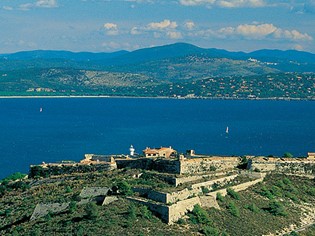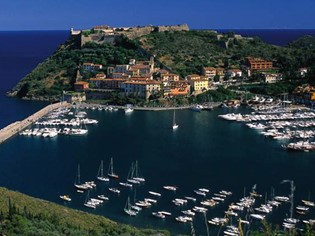MONTE ARGENTARIO
“How lovely is this place! In a place as lovely as this, even you must concern yourselves with having lovely souls!”
Mother Teresa of Calcutta
“The nightly shade once more withdraws and we now entrust ourselves to the sea,
To the propitious breath of a wind from yonder mountain:
The Argentario descends amidst the waves
And holds with double yoke gulfs of azure.”
Rutilio Namanziano, The return, 417 a.C.
The Argentario Mountain is a promontory which extends into the Tyrrhenian Sea next to the two southernmost islands in the Tuscan Archipelago: Giglio Island and Giannutri Island.
Originally an island, later on the Giannella and Feniglia Dunes formed connecting it to the mainland.
The territory is predominantly hilly with man-made terraces, while the coast, high and jagged, offers outstandingly lovely creeks and coves which will be of great interest to tourists.
There are two towns on the promontory: Porto Santo Stefano, which faces north, and Porto Ercole, smaller and facing south.
“Let us head to the port which bears
Hercules’ name, it is near:
the breeze softly follows the day
which draws to an end.”
Rutilio Namanziano, The return, 417 a.D.
It would appear that it owes its name to the Etruscans who inhabited the area, as is demonstrated by the recent discovery of an Etruscan necropolis in the area of Cala Galera.
Porto Ercole is a haunting seaside village on the eastern coast of the Argentario with a well-equipped touristic port. It faces the bay dominated by the hefty piers of the Spanish strongholds and characterized by a picturesque marina where the houses are mirrored.
You enter the old town center through a door surmounted by the clock tower. Straightaway to your right a steep flight of steps, which hugs the walls, leads to the Church of Saint Erasmus wherein are housed the tombstones of the Spanish rulers who presided during the Royal State of Garrisons.
In 1610, Michelangelo Merisi, known as Caravaggio, died alone and a fugitive near Porto Ercole. Malaria was most likely the cause of death.


